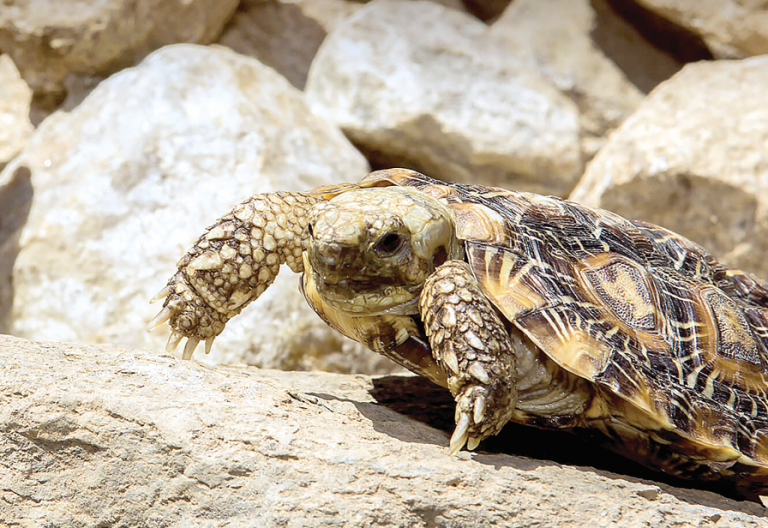Fastest tortoise species faces threat of slow demise in Kenya

“Slow as a tortoise” maybe the popular saying.
The saying can however be challenged after the discovery of a unique species of tortoise, different in behaviour and physical appearance.
The pancake tortoise is unique in the tortoise family with its shell being unusually thin, flat, and flexible. This characteristic helps the pancake tortoise to be the fastest of the tortoises.
While most other tortoises have solid structural shells, there are many holes in the shell of the pancake tortoise, making it lightweight and agile.
When pancake tortoises hatch, they have a domed shell, like all other tortoises. However, as they grow, their shell flattens, staying true to their ‘pancake’ name.
According to Dr Dominic Maringa, head of conservation and wildlife in Lewa Conservancy, the flexibility of the shell allows pancake tortoises to crawl into narrow rock crevices, making it possible for them to use a habitat that is not suitable for any other tortoise. The species is native to Tanzania and Kenya and was discovered in 2019 at Lewa Conservancy.
Since its first sighting in 2019 at the northern boundary of Lewa, Maringa says the number recorded has increased to 289.
“We have been monitoring the area for the last three years and have expanded our search to other community conservancies and the number is higher towards Samburu,” he explains.
Unfortunately, according to Dr Maringa, these peculiar adaptations make pancake tortoises sought-after for the illegal pet trade, making them vulnerable to extinction.
Evading prey
“The Pancake tortoise is currently listed as Critically Endangered (CR) by the International Union for Conservation of Nature (IUCN) with live animal collection for the international pet trade being the biggest threat to the tortoise,” adds Dr Maringa, explaining that another major threat is cultural belief.
“Some communities associate pancake tortoises with sorcery, witchcraft and bad omen, and they are killed once sighted,” he says.
While mongooses, wild dogs, and humans can prey upon pancake tortoises, but they have a variety of adaptations to help them to stay safe. Instead of hiding in its shell for protection, the pancake tortoise is able to quickly flee from danger.
Pancake tortoises flee to the rocky area and wedge themselves into the rocks until the threat is gone.
“They live harmoniously with snakes in the rock crevices hence rangers have been trained on how to handle them to avoid snakebites,” Maringa adds.
In Kenya, pancake tortoises are losing habitat to agricultural development while in Tanzania, overgrazing of domestic cattle and goats is a problem.
Maringa is concerned over low awareness about the tortoise species in the community and the country at large.
“After the discovery of the animal, I am glad there is an ongoing national conversation led by Kenya Wildlife Service (KWS) and we are in the process of developing a National Species Recovery Strategy,” he says.
Understanding pancakes
To monitor the animal, they have a Passive Integrated Transponder (PIT) tags. The tags help scientists’ track individual organisms by providing a reliable lifetime ‘barcode’ for an individual animal, which is important. A key aspect of understanding animal migration is the ability to track and recognise individuals over time and space
“We are also collecting samples for DNA analysis in future. This will help us to understand how far each family lives from each other, if they migrate from one conservancy to another, how they are related among other information,” he added.
Trade in pancake tortoises is restricted by the Convention on International Trade in Endangered Species of Wild Fauna and Flora (CITES).












